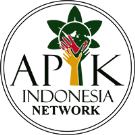PERSEPSI PENGUNJUNG TERHADAP PENGEMBANGAN EKOWISATA DI KEBUN RAYA LIWA
DOI:
10.29303/jbl.v3i1.191Published:
2020-03-02Issue:
Vol. 3 No. 1 (2020)Keywords:
ecotourism, botanical garden, visitors satisfaction, ex situ conservationArticles
Downloads
How to Cite
Downloads
Metrics
Abstract
Visitors' perception can be used as a source to develop ecotourism object. The purpose of this research was to explain visitors' perception towards the development of ecotourism object in Liwa Botanical Garden. The data taken through closed-interview, observation and literature study. The data collected was analyzed by one score one indicator. The result of the research showed that the attraction object in Liwa Botanical Garden was quite satisfying: infrastructures, facilities, and services were categorized as satisfying: however the acomodation was less satisfying. The additional and restoration of plant collection, food stalls, parking lot, guard post, gate, the color of footpath, children play zone, and camping ground need to be fixed.
References
Amrullah, H. A & Mawardi, M. K. (2018). Analisa kelayakan UB Forest sebagai. destinasi wisata berbasis eco tourism. Jurnal Aministrasi Bisnis, 61(1), 80-89.
Abeli, S.R. (2017). Local communities’ perception of ecotourism and attitudes towards conservation of Lake Natron Ramsar Site, Tanzania. International Journal of Humanities and Social Science, 7(1), 162-176.
Fandeli, C. & Nurdin, M. (2005). Pengembangan Ekowisata Berbasis Konsevasi di Taman Nasional. Yogyakarta: Fakultas Kehutanan UGM, p. 256.
Febryano, I. G & Rusita. (2018). Persepsi wisatawan dalam pengembangan wisata pendidikan berbasis konsevasi gajah sumatera. Jurnal Pengelolaan Sumberdaya Alam dan Lingkungan, 8(3), 376-382
Gustiarini, A., Avenzora, R. & Teguh, F. (2018). Analisis motivasi dan persepsi ekowisata penonton perempuan atas tayangan My Trip My Adventure terhadap destinasi wisata alam. Media Konservasi, 23(1), 43-51.
Haris, M., Soekmadi, R. & Arifin, H. S. (2017). Potensi daya tarik ekowisata suaka margasatwa Bukit Batu Kabupaten Bengkalis Provinsi Riau. Jurnal Penelitian Sosial dan Ekonomi Kehutanan, 14(1), 39-56.
Ihsan., Soegiyanto, H. & Hadi, P. (2015). Pengembangan potensi ekowisata di Kabupaten Bima. Jurnal Geoeco, 1(2), 195-206.
Marcelina, S.D., Febryano, I.G., Setiawan, A. & Yuwono, S.B. (2018). Persepsi wisatawan terhadap fasilitas wisata di Pusat Latihan Gajah Taman
Mustika, T. A. (2017). Analisis pengembangan sarana prasarana obyek wisata alam Telaga Ngebel dalam meningkatkan kesejahteraan ekonomi masyarakat. Jurnal Administrasi Bisnis, 53(2), 1-10.
Prapti, L., Suryawardana, E & Triyani, D. (2015). Analisis dampak pembangunan infrastruktur jalan terhadap pertumbuhan usaha ekonomi rakyat di Kota Semarang. Jurnal Dinamika Sosial Budaya, 17(2), 82-103.
Subangkit, L., Bakri, S & Herwanti, S. (2014). Faktor-faktor kepuasan pengunjung di Pusat Konservasi Gajah Taman Nasional Way Kambas Lampung. Jurnal Sylva Lestari, 2(3), 101-110.
Tanaya, D.R. & Rudiarti, I. (2014). Potensi pengembangan ekowisata berbasis masyarakat di Kawasan Rawa Pening, Kabupaten Semarang. Jurnal Teknik PWK, 3 (1), 71-81.
Theingthae, S. (2017). Sustainability of community based ecotourism development after the impact of tsunami disasters: Comparison between buddhism community and muslim community in Phuket Province, Thailand. Journal Tourism Res Hospitality, 6(4), 1-10.
Widagdyo, K. G. (2017). Pemasaran daya tarik ekowisata dan minat berkunjung wisatawan. Jurnal Bisnis dan Manajemen, 7(2), 261-276
Wu, S.T. & Chen, Y.S. (2018). Local intetions to participate in ecotourism development in Taiwan’s Atayal communities. Journal of Tourism and Cultural Change, 16(1), 75-96.
Author Biographies
haqfini bina lalika, Universitas Lampung
susni herwanti, Universitas Lampung
indra gumay febryano, Universitas Lampung
gunardi djoko winarno, Universitas Lampung
License
The Authors submitting a manuscript has understood that if accepted for publication on Jurnal Belantara, the copyright of the article shall be assigned to Jurnal Belantara of the Forest Study Program University of Mataram as the publisher of the journal. Copyright encompasses rights to reproduce and deliver the article in all forms and media, including reprints, photographs, microfilms, and any other similar reproductions, as well as translations.
Jurnal Belantara of the Forest Study Program University of Mataram and the Editors make every effort to ensure that no wrong or misleading data, opinions, or statements be published in the journal. In any way, the contents of the articles and advertisements published in Jurnal Belantara are the sole responsibility of their respective authors and advertisers.
We strongly encourage that manuscripts be submitted to the online journal system in http://belantara.unram.ac.id/index.php/JBL/index. Authors are required to create an account and submit the manuscripts online. For submission inquiries, please follow the submission instructions on the website. If the author has any problems with the online submission, please contact Editorial Office at the following email: [email protected]
Contributors are responsible for obtaining permission to reproduce any materials, including photographs and illustrations, for which they do not hold the copyright and for ensuring that the appropriate acknowledgments are included in the manuscript.
Users of this website will be licensed to use materials from this website following the Creative Commons Attribution 4.0 International License. No fees charged. Please use the materials accordingly.











